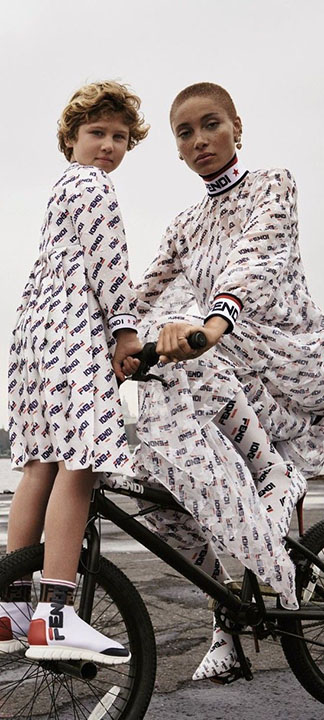 If anyone looked at my saved basket on ASOS (the virtual equivalent to walking around with loads of items in your hand in an actual store) they wouldn’t have the slightest clue as to what is going on in my life. I have literally everything stored there, from maternity clothing, to party décor to a Fitbit watch, none of which I have any intention of buying. Firstly, because I have no need for them and secondly because I see them as pictorial extensions of an imagined life.
If anyone looked at my saved basket on ASOS (the virtual equivalent to walking around with loads of items in your hand in an actual store) they wouldn’t have the slightest clue as to what is going on in my life. I have literally everything stored there, from maternity clothing, to party décor to a Fitbit watch, none of which I have any intention of buying. Firstly, because I have no need for them and secondly because I see them as pictorial extensions of an imagined life.
I suppose this is why we consume even more now, because of the unlimited access to visuals, which in turn probe us to imagine our life in multiple different ways: ‘Oh! What if I was actually in that bikini on that particular Caribbean island?’
With this unlimited access, it is not difficult to see why we try to curate everything that surrounds us. Another website that I spend time on is Net-a-Porter, despite it not having the save bag option. I recently found that it has introduced a new tab called Child, which carries luxury designer clothing for children of all ages. Aesthetically and logically it makes sense, because new clientele who indulge in their offerings are now the upcoming parents. These are the ones who have been integral in shaping the Instagram designer revolution. I believe it is a natural process of wanting your children to be like you, whether through religion, interests, food, culture or what have you. After all, our children are mini extensions of us.
The question of how expensive children’s clothing should be has always been debatable. Many often shout buy cheap because they grow out of them quickly, others say buy expensive because they believe their child is deserving of only the best, or it is about satisfying their egos.
Whichever way you wish to put it, what and how parents choose to dress their children has always been up to the parents. Of course, a one-month-old baby doesn’t have the ability to make his or her own sartorial choices, except when he or she expresses disgust at being too hot or cold in the clothes by way of crying fretfully.
But where do we draw the line to let them know it is okay to use your independent style ideas to solidify and shape their personality? Where do we draw the line when it comes to not allowing our tastes to influence theirs for the sake of them becoming their own independent selves free to construct their own decisions?
My very good friend Katie, who is also a mother, once told me that it is sometimes tough to make a decision that will probably support a child coming into his or her own. She once recalled a time when she was dropping her son to school and he was one of the few children who didn’t cry. He was happy to see other people, but she still admired the bond the parents and crying children had. Perhaps it showed a visually stronger sense of love. In very simple words she said to me as uncomplicated as it may seem, from a very young age you need to slowly prepare them for the skills and attitudes they should have in life. In that moment he seemed independent and it is an attitude she wants him to hone.
You may look at clothing as frivolous, in particular children’s clothing, but in these seemingly simple structures we are taught some of the most valuable lessons. The importance of self-expression, respecting individuality, materialism are all learning points here. I can’t say that for anyone this is easy, as for myself this will probably be ten times harder, I’ve already imagined dressing my daughter like a little lady and my son as a little gentleman. Nevertheless, we must be open to the idea that self-expression comes in different forms and we must freely teach our children the importance of this. Forget the personal egos, follow the steps that allow critical life lessons to take place.










